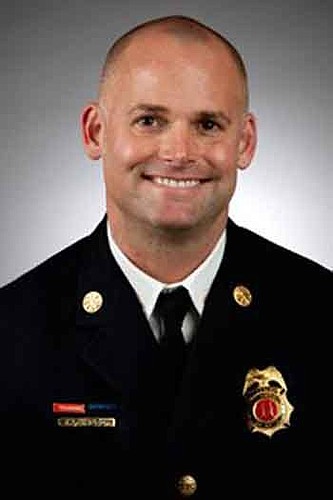
People who live and own businesses in Duval County and purchase insurance to protect themselves from loss due to fire are probably be in line to save some money.
The Insurance Services Office has upgraded Jacksonville from a Public Protection Classification Class 3 rating to Class 1 for 95 percent of the county, which indicates superior fire protection.
Jacksonville has held the Class 3 rating since 1974.
The rating scale, with Class 1 being the best and Class 10 meaning available fire suppression services do not meet the organization’s minimum requirements, is based on three factors:
• 50 percent is derived from fire operational capacity, including the number and locations of fire stations and how the department maintains and tests its engine and ladder companies.
• 40 percent is based on availability of enough water to fight a fire, focusing on on whether the community has sufficient water supply for fire suppression beyond daily maximum consumption, as well as the number and location of fire hydrants and how often hydrants are inspected and tested.
• 10 percent of the score is from the level of communication with the public, such as how well the fire department receives and dispatches fire alarms, including the level of technology and number of personnel in the emergency call center.
In addition, the calculation takes into consideration community risk reduction efforts such as fire prevention, public fire safety education and fire investigation.
Jacksonville Fire and Rescue Chief Kurt Wilson said the improvement in classification is due to reducing response time, improved documentation of training, pre-fire planning and some additions to the department’s equipment inventory, such as new fire engines and rescue units.
A new $2.4 million fire station opened in 2014 in Bartram Park, putting that fast-growing area within the rating organization’s criteria that residences and businesses should be within five road miles of a fire station and no more than 1,000 feet from a hydrant.
Wilson also cited JEA’s partnership in the classification improvement program.
He said the utility installed more hydrants in neighborhoods and has taken over monitoring and testing of the hydrants.
Some of the changes that resulted in the improved rating were minor, such as upgrading tarps that are used to protect property from water damage during fire operations. They were upgraded to rip-stop material, one of the rating organization’s standards.
The ratings are considered the industry standard for determining insurance premiums. Generally, communities with better ratings suffer less casualty loss due to fire than those with lower ratings and therefore qualify for lower premiums.
Asked about the potential economic impact of the improvement for policyholders, the insurance office’s Vice President of Community Hazard Mitigation Robert Andrews said via email the organization provides services to insurance providers that they may or may not choose to make use of when determining prices for coverage.
Andrews also said the company cannot speculate on how a classification change will affect local property insurance premiums. Insurers alone set individual insurance rates.
He suggests that individual property owners contact with their insurance representative concerning the potential effect changes in ratings may have on their premiums.
Earning the highest rating should reduce premiums for fire insurance in Jacksonville, but don’t expect to see an immediate change, said Amy Bogner, spokeswoman for the Florida Office of Insurance Regulation.
“Most likely, it would take some time,” she said.
Most insurance companies consider the fire rating when setting premiums, but they submit rate changes no more than once a year. After a rate change is approved by the state, it doesn’t go into effect for a specific policyholder until the policy is renewed.
Bogner said while each insurance carrier determines its own rates, when a community’s class rating improves, premiums generally can be expected to be reduced for the same level of coverage.
In 2014, when Osceola County went from Class 9 to Class 3, it led to an average reduction in fire insurance premiums of 33 percent for wood-frame structures and 23 percent for masonry construction, she said.
While Jacksonville fire insurance purchasers won’t know the effect of the improved rating until they renew their insurance policies, attaining the highest grade possible has gained the attention of at least one other city in the state.
“The Tampa fire chief called me,” Wilson said. “He said his mayor told him that ‘whatever they did in Jacksonville, you need to do it, too.’”
@DRMaxDowntown
(904) 356-2466